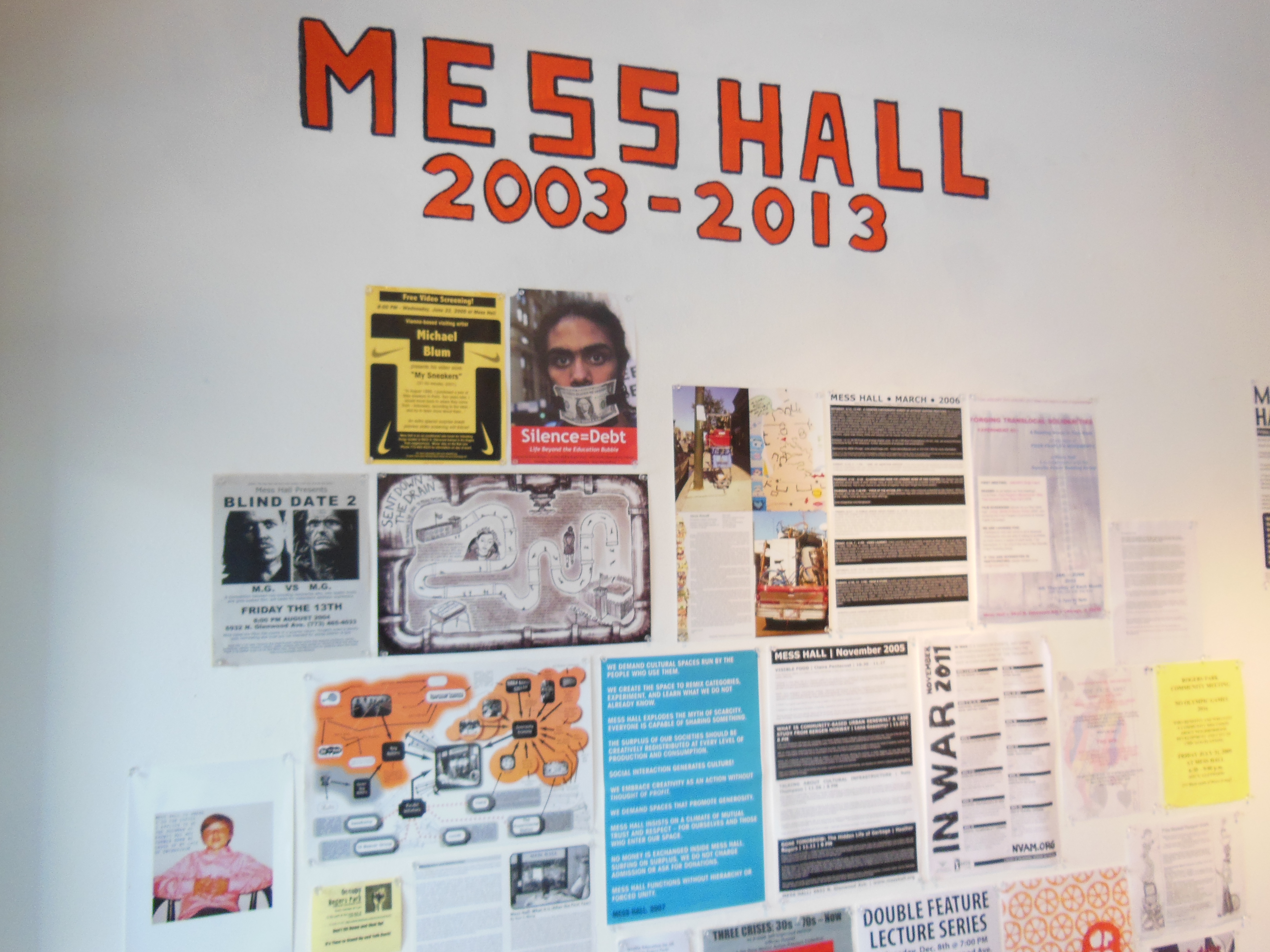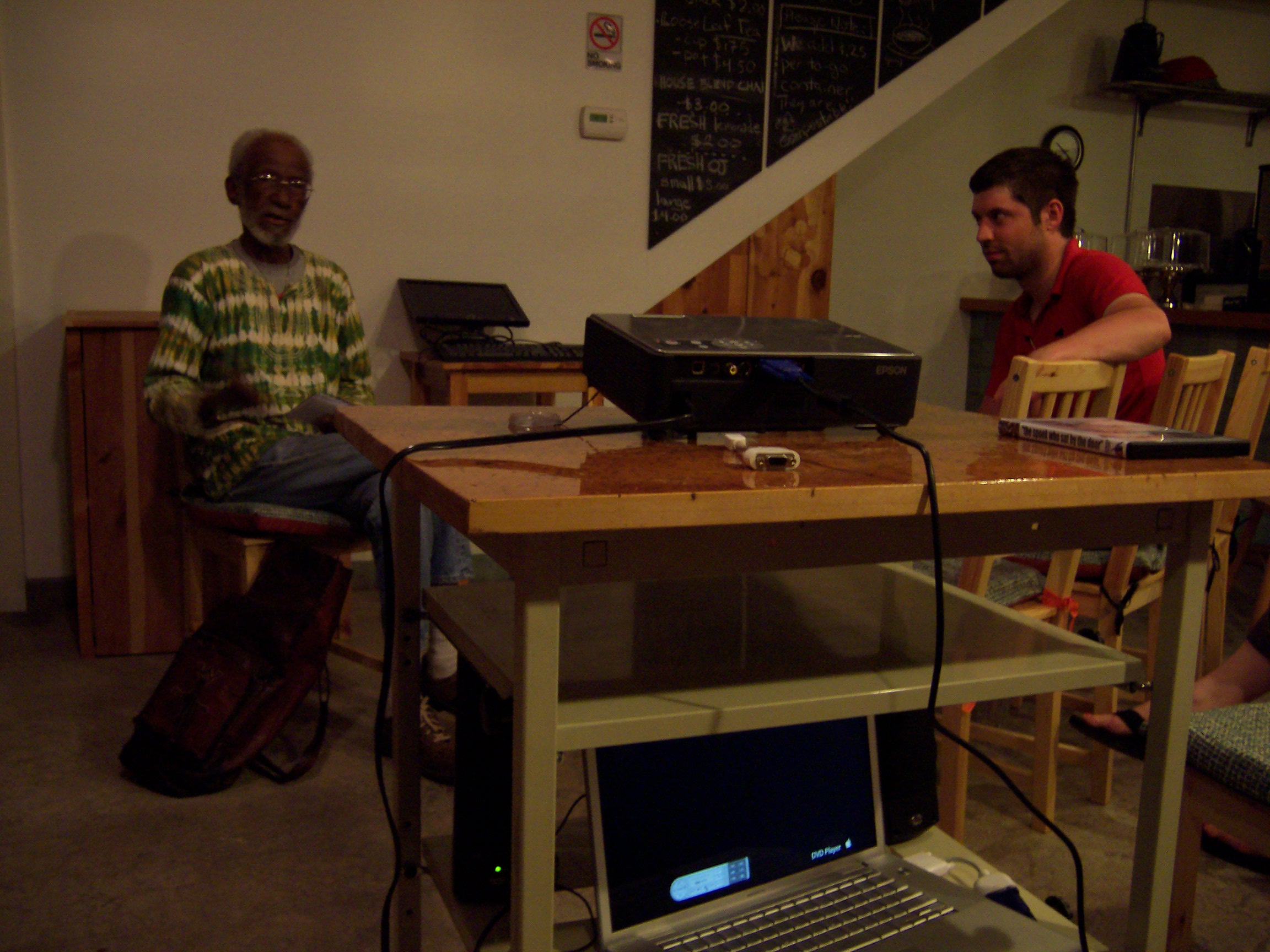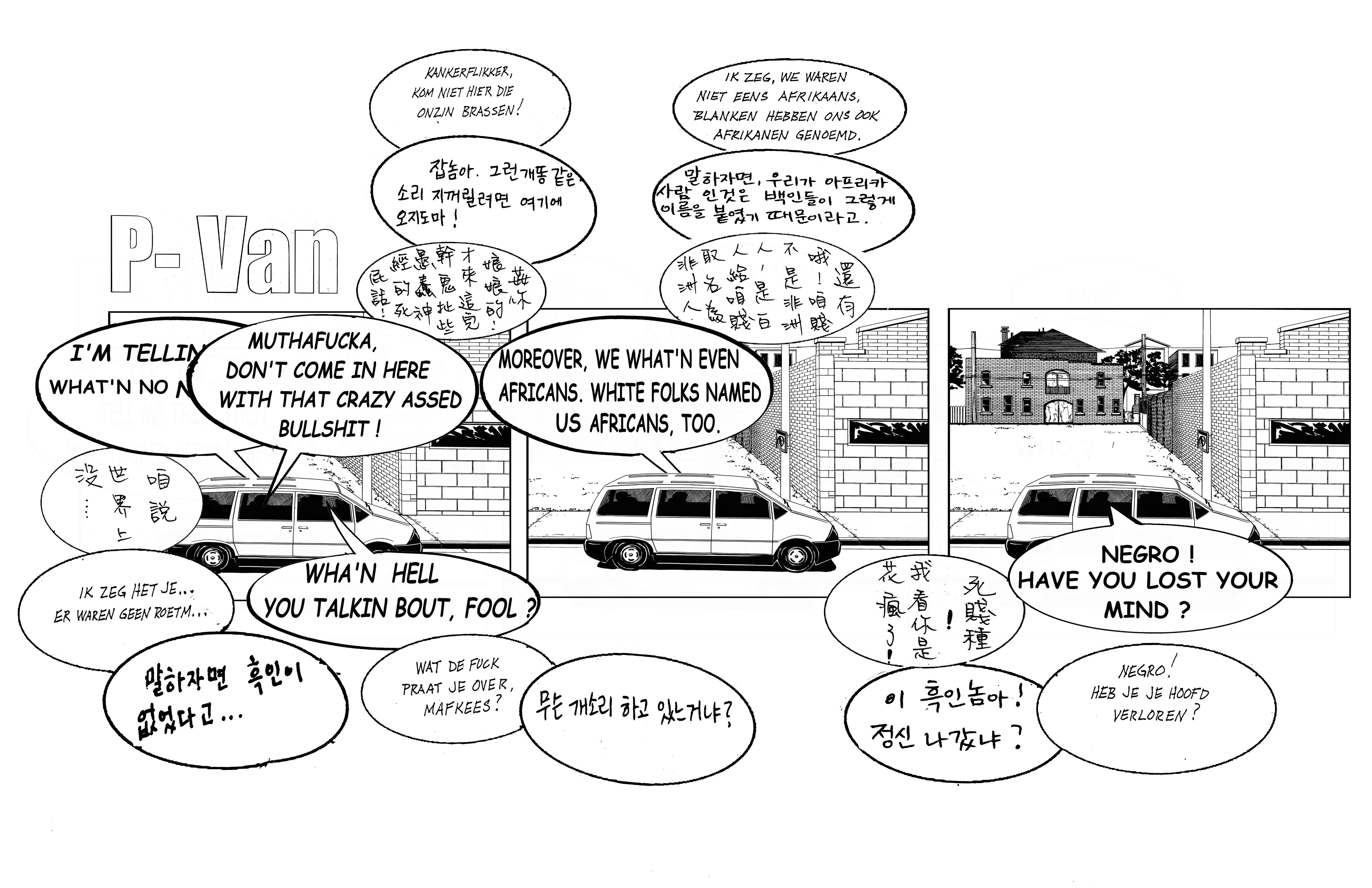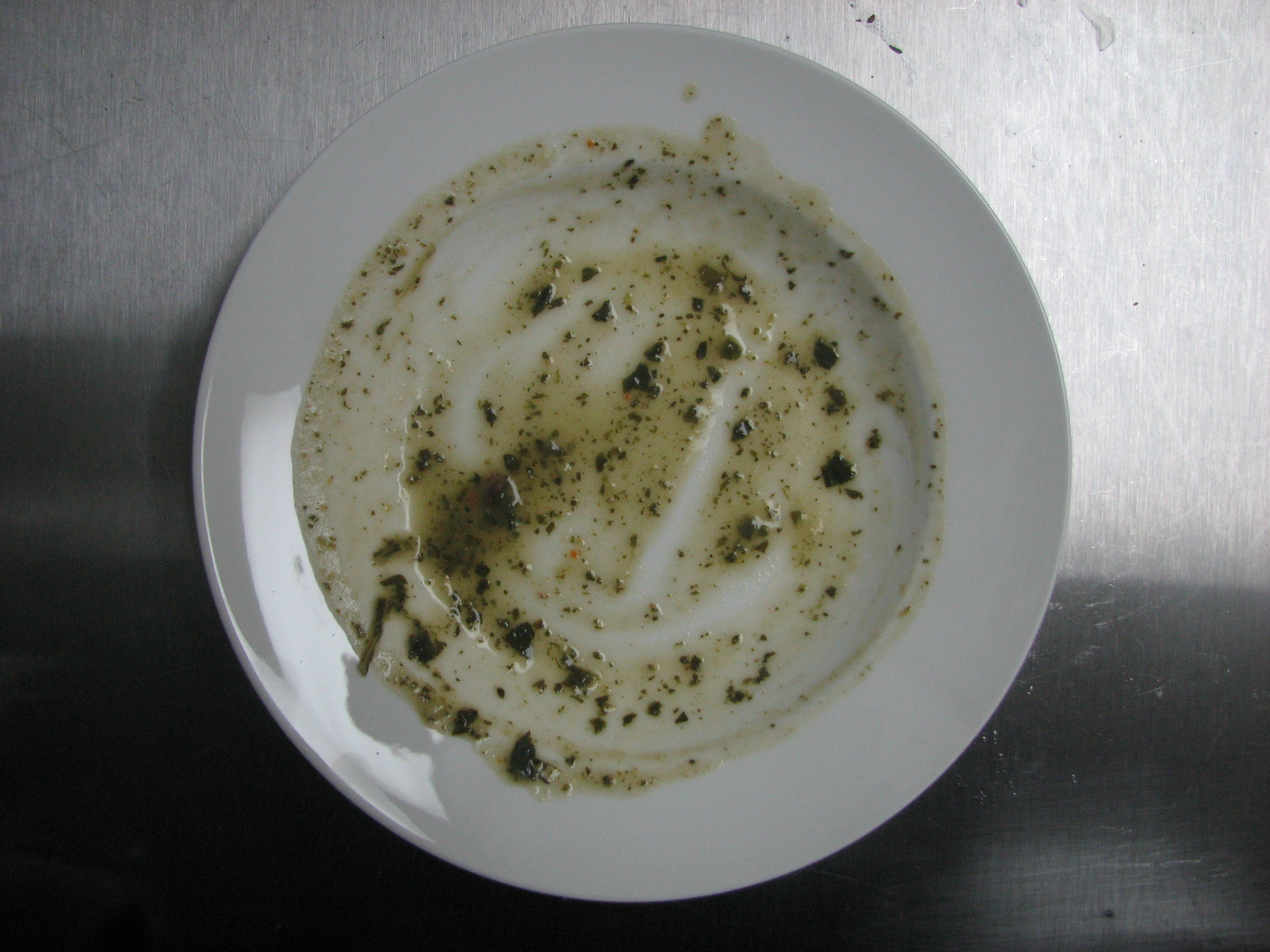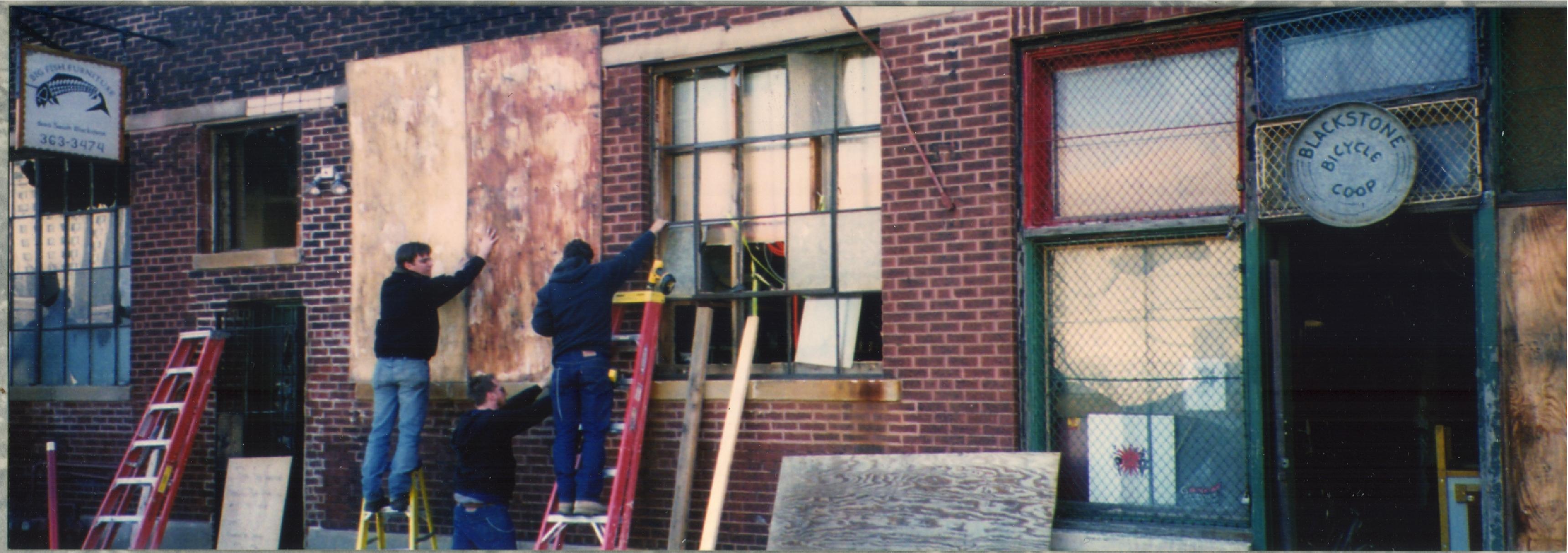Preface
This text was originally commissioned for inclusion in a volume of the Chicago Social Practice History series. Judged to be inadequately convincing in its thesis by series editors, it was axed. Being more of an exercise in genre evasion than in genre definition, the text is certainly fuzzy in applied terminologies. But the action that took place during the period covered was never about defining a kind of art, at least not from the ground level. It was about struggling to make the city livable. That is what forced so many art workers in Chicago to think outside of conventional forms, and, ironically, what brought consequent outside attention to the many forms of politically engaged work happening in the city. Consider this a contribution to the social history of “social practice” in Chicago rather than to an art history.
The Braided Threads of a Gridded Counterculture
It was one of those days when different proximate elements aligned, revealing a single, larger context. Or maybe helping to build it.
I was in Chicago to join the ten-day roving Continental Drift seminar of June 2008, already in-progress. Part territorial expedition, part social experiment, part enacted research, and part shoestring leisure tour, this was the fifth iteration of the initiative begun by Brian Holmes, Claire Pentecost, and people from New York’s 16 Beaver Group. The earlier occasions were concentrated seminars, heavy on the lectures and discussions, taking place in single locations over a couple of days. The fifth Continental Drift was experientially varied and scheduled to move through two states in ten days, from Urbana to Madison, with many stops and events along the way, rural and urban. The project’s full title expressed its lumbering path and open-ended nature: Continental Drift Through the Midwest Radical Culture Corridor.
Sam Greenlee screening The Spook Who Sat By The Door, Chicago, 2008
The core group of “drift” organizers numbered about ten or eleven, myself among them, forming the earliest assemblage of the activist research group that later called itself Compass. The group played the role of catalyst but the essence of the drift was to be found in the many threads that were knit together over those days. The Drift brought into one travel experience manifold encounters, for example meetings with environmental justice activists in Champaign-Urbana, a neighbors’ potluck with a Quaker family who hosted our tents on the lawn of their rural Wisconsin farmlet, a visit to an organic dairy farm operated by a conservative Christian family, and an intimate screening of the cult Black cinema classic The Spook Who Sat By The Door with the filmmaker, Sam Greenlee, in attendance, only to name a few. Chicago was the Drift’s weekend stop, with activities planned for Friday night until Sunday evening.1
As expansive as the Drift was, for the purposes of this essay it is more illustrative to relate the bases I touched earlier in that day. Before linking up with Friday evening’s Drift event at the experimental social space Mess Hall, I took the opportunity to tend to other associates—dispersed sites of action overrunning the terminologies of socially-engaged art, but that in aggregate amount to an art world built around a multi-valent criticality which, in my experience, came to define the Chicago scene. The afternoon stop was the studio workspace of artist Kerry James Marshall, whom I had first met nine years earlier on an assignment for New Art Examiner, then the local art publication of record. The editor, the late Kathryn Hixson, was always looking to recruit young writers and she liked my combative letters to the editor, so she asked me to bring a fresh perspective for a feature profile on Marshall.
Kerry James Marshall, Van Africa from the P-Van series.
Ever since writing that text I would periodically drop by his studio to trade updates, see works in progress, and hear his latest pessimistic observations, either about the goings on in the elite art world or his dysfunctional South Side neighborhood or the sad state of our republic generally, delivered in Marshall’s always friendly Southern California geniality. At this point I have seen Marshall’s career go from city pride to national to global. I always learn something from our visits and on this particular occasion my take home tip was the name Wendy Brown, the political theorist, whose ideas about critical judgement Marshall cited at one point in the conversation. I had not heard the name much less read her work, so I made a note of it.
From there I headed to West Loop Gate for an opening at Walsh Gallery, a commercial space specializing in contemporary Chinese and South Asian art, for a show organized by University of Chicago art historian Wu Hung titled Portraying Food (and the absence of it). Wu Hung has been curating shows of contemporary art as a side activity to his scholarly work on the visual cultures of early dynastic China ever since his graduate student years in the 1980s. Professor Wu’s engagement with contemporary art gained high visibility in his years in Chicago, a time in which he curated several remarkable shows at the Smart Museum, making it a key venue in the international exposure of experimental art from China. As a scholar engaged in a terrain new to the expansionist global art circuit, Wu Hung brought an unusually analytical substance to an otherwise uncritical market. Putting together shows at Walsh Gallery functioned to counter the superficiality of most commercial treatments of new art from China, and provided Wu Hung yet another outlet for his overflowing prolificacy.
The gap in understanding present day conditions in China is striking, considering the mutual dependency of the world’s two largest economies. Imperfect comparisons aside, the fact is Chinese and American governments, militaries, and businesses are learning from each other, if only to account for their most significant competitors. Artists lag in this respect. Therefore Wu’s shows at the Smart, for example Canceled, comprising the documentation and re-creation of a Song Dong exhibition that was censored in Beijing, and Displacement, about artists’ interpretations of the upheavaels caused by the construction of the massive Three Gorges Dam, performed the service of offering a critical view into the social conditions negotiated by artists in China. Wu’s curatorial themes—sourced in relation to pressing questions regarding Chinese society—cannot but resonate with politicized artists in the US, and Portraying Food was no exception. Coming out of a national history scarred by famine and now paradoxically traumatized by an unprecedented economic boom, food has always occupied a place in Chinese society and culture at once vexed and valorized. Given the rise in protein consumption, the implosion of food safety standards, and the chemicalization of traditional agriculture in China, at the opening I could only take in Zhu Yu’s lush oversized paintings of greasy after-dinner scraps with the thought to what was next on my night’s agenda: the Drift double-feature screening at Mess Hall of Our Daily Bread, a Depression era classic about collective farming, and the activist documentary The World According to Monsanto.
Zhu Yu, Sheng Can/Leftover Meals
Our Daily Bread, 1934
But on the way there I had one more stop to make: picking up radical philosopher Gerald Raunig of EIPCP from a North Side Blue Line station. Raunig had been introduced to me several years earlier by the artists Beatrix Zobl and Wolfgang Schneider, a collaborative duo who had spent half a year in Chicago as residents of the Austrian Artist’s Studio, a government sponsored residency for Austrian artists. The acquaintance with Raunig led to me writing for publication a review of Art and Revolution, his treatise on the “long twentieth-century” marked by artists brushing against political revolutions, and his first book translated for an English-language readership. He was just arrived from New York, coming to Chicago for the first time out of his own pocket, joining us for Drift events, including a Saturday night public dialogue with me at the space on Milwaukee Avenue shared by InCUBATE, progenitors of the Sunday Soup micro-granting model, and AREA, an artist initiated, biannual activist and education publication. The brand new issue of AREA was released at an event that very afternoon, scheduled as another Drift stop, so of course we went to that. To complete his day-long immersion, the one request Raunig made was to visit the Seminary Co-op Bookstore in Hyde Park, which he’d heard about before he set foot in North America. When he stepped up to the cashier, his stack of books included three titles by Wendy Brown.
Were these coincidental topics simply happenstance intersections of widely shared ideas and commonly known names? Undoubtedly. With lead times and planning being what they are, overlaps are more often than not serendipitous, indicators of converging interests rather than deliberate coordination. And yet the accidental commonalities linking people with otherwise divergent practices speaks to a larger context of not only shared concerns but perhaps even shared priorities, and certainly shared frameworks of inquiry. The surprise for me was that I had often described my art worlds as somewhat segregated, in the sense that Kerry James Marshall never set foot in Mess Hall, and many art workers in the orbit of InCUBATE or AREA journal never went to see a Wu Hung curated show—in neither case a matter of unwillingness, but more the perceived lack of relevance. And yet here was a day in which my worlds coalesced, or, as Raunig might say, revealed itself as concatenated—the bare edges of different worlds pulling in different directions but touching at points of contact taut and suspended with potential energy.
As an exercise in dropping names, the above story is the best (or worst) I can do, and for that I can thank (or blame) Chicago. The larger matter, however, is that I am not the only person from that time to have such stories of unexpected but ultimately reasonable collisions. For anybody active in Chicago’s art circles of, say, 1998 to 2010, different scenes and subcultures were a given, clustered spatially in different parts of the city and pre-ordained by different sets of institutional affiliations. Even limited to the politicized circles, the segmented environment surpassed the capacities of any individual person to take in. For me it was the one Friday—or maybe the forty before—that had me thinking, Chicago was the best place to be in the early aughts. As I traveled and became familiar with situations in other cities, and definitely after I moved to Madison, I observed easily that other cities did not host the density of practices, spaces, and groups found in Chicago, even with the increased visibility of socially engaged art. Was it simply a matter of numbers, of having a threshold mass of art workers with common values? Was it a question of supportive infrastructure, friendly institutions, and international ties? Or the often cited conditions of living, wherein Chicago artists did not have access to a strong local collectors’ market but could find junior and adjunct teaching positions, sympatico curators, and relatively affordable rents? Yes to all of that. But to what did it all add up?
*
Oppositional political and cultural work lives in the conundrum of our time: how to proceed in a universe stripped of “the alternative,” in which there is no underground, in which every conceivable action on every conceivable level is an instantiated reproduction of the system we despise. Looking back on the past fifteen or so years of politicized art and art activism from Chicago, I see that the paradoxes and contradictions stem from that basic problem: there is no outside. The countercultural rejections of past generations simply no longer held true. The anti-Establishment refusals, the punk spit, the various separatisms, avant gardes, and drop-out movements from decades past remain our notional countercultures, long after their historical moment closed and the associated cultural productions either were appropriated or canonized. The reality-principle condition of new millennium life demanded comparatively nuanced negotiations of whatever opportunities artists found; blanket pronouncements are more difficult than in earlier times, while the pleasure-principled countercultures belonging to the pre-NSA, pre-crack cocaine, and pre-AIDS decades long past count as so much magical thinking. In an age of permanent war and near-total surveillance the need and desire for countercultures are as strong as ever. But under socioeconomic conditions that over-determine Burning Man as a hedonistic vacation and treat underclass youth cultures as suicidal exits from permanent economic handicap; that, furthermore, immediately spectacularize every insurgency and decontextualize every style the world over, countercultures can no longer be delineated by codes of appearance, manner, or generational identity. Even by the turn of the millenium, potential countercultures had as a basis only their common investments in ideas, attitudes, and the work of living in a particular place.
In the period considered here, art workers produced exactly that—a renewed counterculture built around collectively articulated values, a system of spaces, enterprises, and cultural initiatives, and an interrelated series of political struggles relevant to the democratization of the city. Stylistically diverse, aesthetically varied, and intergenerationally constituted, it amounted to a counterculture characterized by a criticality of a Chicago stripe. Unlike the generic criticality of the art world at large, a posture taken by so many works that purport to raise consciousness while reproducing the very forms supposedly demystified, a Chicago-centric strain of critical art went in a different direction, with meaning produced apart from the art world trade in commodity objects, remote from the taste-making of wealthy collectors, with deep engagements of place and space, and that builds as much as tears down.2
This criticality comprised three operational poles, beginning with criticality applied to perception, which is to say, a commitment to describing the observable with severe accuracy, including with respect to ethical and aesthetic dimensions. Thus, the initial question driving artists’ engagements with social conditions is, what is this thing, be it an artwork, a policy, or a cultural trend, and what is it saying and doing, in and to its audience, city, or society? And what ought it—and we—be doing? Critical perception is at once a call for self-criticism, research, dialogue, mutual correction, and unflinching judgment. Socially reinforced and collaborative in nature even at its most argumentative, critical perception laced more group discussions, online debates, and interpersonal exchanges than I can recount. The second pole is the function of demystification and denunciation—sourced from among other places Frankfurt School negativity, a politicized intellectual approach rooted in the historical beginnings of critical theory as a project started under conditions of external political repression.
The third pole is an imperative derived from the Greek krisis, referring to a duration of unsettled outcome and imminent decision, with radically different turns of fate hanging in the balance. As historian Reinhart Koselleck summarizes the root: “…the concept is applied to life-deciding alternatives meant to answer questions about what is just or unjust, what contributes to salvation or damnation, what furthers health or brings death.”3 As the element that completes the arsenal, this operation is founded on a recognition of finite openings in time and space for action and actualization. The ineffable wager of agency, as it might be termed, produces an art not of mere reflection, but of intervention, experimentation, and collectivism—not for the pleasures of sociality only, but rather for reasons of pooled labor, shared brainpower, dispersed risk, and potentially new political formations.4
Apart from the intellectual history, this third pole was raised by the contested conditions of the neoliberal city itself. Urgent on-the-ground situations demanded decisive action, for example the grassroots emergency effort to protect artist Dan Peterman’s utopic 6100 South Blackstone building after a devastating fire in 2001, or the 2004 CHAos bus shelter sign intervention against the Chicago Housing Authority’s Plan for Change, or the 2009 “Unlympics” events coordinated by Anne Elizabeth Moore making visible the criticism of Mayor Daley’s all-out effort to win the 2016 Summer Olympics. Organized in reaction to the creeping violence of displacement and planned marginalizations, such events helped to produce communities of activist creativity, sometimes with art workers at the core. In this sense the counterculture was the product of art workers living in a city undergoing a freshly capitalized re-territorialization, a historic shift from the lingering last chapters of deindustrialization toward a city refashioned as a financial hub, service center, and playground secured for a global elite.
6100 South Blackstone, morning of fire, 2001. Photo by DS Wang.
Combined with the range of positive efforts that included exhibitions blending culture and politics, spaces for experiments in organizational structure and economy, and publications that created a documentary trace, in Chicago what Brian Holmes would call the “eventwork” of critical art accumulated its own validity and influence.5 Partially an art world, partially a world of political affinities, partially the indirect creation of the institutional infrastructure, this rising current generated an organically evolving set of strategies, structures, and spaces—in other words, a culture—produced by art workers who availed themselves of whatever openings there were for creative dissent and non-conforming construction. But as with all countercultures, the moment of its recognition is also the beginning of its thinning. In this case, unsurprisingly since it is where so many of the practitioners exist professionally, the pathway to recognition goes through the official art world and its assimilationist machinery. Because the tendencies of the Chicago counterculture were articulated through the consistently disruptive/productive deployment of contextually specific critical art, rather than through a market-driven dynamic of “forgetting,” as Pamela M. Lee conditions the expansionist global art world, the result is a new set of contradictions.6 The question is this. Given the political dilution produced by increased institutional investments in arts of social engagement, the dependably high rank in the economy of attention earned by more than a few, and the enlarged network of Chicago-associated critical art workers woven through geographically dispersed positions of influence, what kinds of productive disruptions remain possible?
*
With a price of some awkwardness, I have been careful to not name the counterculture of which I speak. This is partly deliberate, as whatever name I used would be, if not ignored, then the start of an unwelcome branding while the clarity gained would be illusory anyway. More importantly, it is partly due to the resistance to labeling built into the counterculture. And therein lies its most uncompromisingly critical tendency, the most counter aspect of this counterculture: a structural disinterest in marketing itself. But that cannot stop the machine of external digestion; the career ascension of individuals and named groups pull countercultures apart. Therefore, even as those from Chicago enjoying the highest accolades install their earned prestige with critical discontents, the best way to close this meditation is with an account of an actual closing.7
Mess Hall, the Rogers Park storefront social space that I and seven others helped to open ten years earlier, closed in 2013. Founded as an experiment, Mess Hall was a place for events, certainly, but over time I came to think of it as a medium for networking. Many from the neighborhood thought of Mess Hall as the free store or a free school, or just as that place around the corner where a bunch of poets met every week. “Mess Hall” as an unspecified entity once or twice attracted invitations to do funded projects from curators who seemed to know nothing of Mess Hall’s changing cast of keyholders, horizontal structure, and lack of formal organization. In short, Mess Hall was a multi-dimensional sited social experiment that resisted fixed interpretation for a decade, but still drew support, official and unofficial. The people who used Mess Hall built and served constituencies, stacked the chairs and swept the floor, attended an uncountable number of meals, and facilited the spread of a countercultural gospel without ever naming it. That successive generations of keyholders kept the place consistently difficult to define was perhaps its most subversive achievement. When the landlord let the keyholders know that the time had come for a change, there was no begging for an exception. A month of closing events was planned.
Bringing Mess Hall to a tidy conclusion exemplifies the kind of dodge that a counterculture of criticality makes. With individual components healthy, radiant lines of influence documented, and networked relationships visible and working, Mess Hall left a living legacy but managed to defy a culture industry that calcifies upon contact—not by existing outside of it, but rather by melting back into the city from which it came, returning to a state of potential. The vacating of the storefront space was a generative disappearance and a conservation of immanent sovereign energy. Without an “outside,” the inside becomes the place for the oppositional substance, for the counter. By disassembling but not leaving, Mess Hall’s final act was an “affirmation of the powers of this world, the discovery of the plane of immanence.”8
The timing was right. The critical art counterculture of Chicago, reaching maturity over half a generation, in 2014 faces shifting grounds once again. Having undergone its neoliberalization, the city is a gridwork of flashpoints, this time with no reordering in sight, while economic and environmental disruptions unfold in every direction, near and far. As systems may not hold, radical potential will be the most necessary resource. Criticality of the Chicago variety may find its countercultural future in the rather less aesthetically promising work of defending democratically livable enclaves from the retrenched brutality of new primary accumulations. The counterculture will inhabit the ten thousand machines that emerge from within, and in the insurrections that will borrow them.
– Dan S. Wang
N O T E S
1. For documentation of the 2008 Drift, see Sarah Kanouse et al., eds., A Call to Farms: Continental Drift through the Midwest Radical Culture Corridor (Viroqua, WI: Heavy Duty Press, 2008). http://heavydutypress.com/wp-content/uploads/2014/02/farms.pdf
2. Hal Foster rightly identifies a fatigue with the unsited, generic criticality saturating the bienniale and art fair circuit. Philosopher Jacques Ranciere neatly punctures the typical operation: “If there is a circulation that should be stopped at this point, it’s this circulation of stereotypes that critique stereotypes, giant stuffed animals that denounce our infantilisation, media images that denounce the media, spectacular installations that denounce the spectacle, etc. There is a whole series of forms of critical or activist art that are caught up in this police logic of the equivalence of the power of the market and the power of its denunciation.” Jacques Ranciere, “Art of the Possible: Varnevale and Kelsey in Conversation with Jacques Ranciere,” Artforum, March 2007, 266. Quoted in Hal Foster, “What’s the Problem with Critical Art?,” London Review of Books, October 10, 2013, 15.
3. Reinhart Koselleck, “Crisis,” Journal of the History of Ideas 67, no. 2: 361.
4. On the theory of the wager in the critical art context, see Critical Art Ensemble, The Electronic Disturbance (Brooklyn: Autonomedia, 1994), 13-14.
5. Key exhibitions, spaces, and publications are catalogued throughout this volume. See also Emily Forman and Daniel Tucker, eds., Trashing the Neoliberal City (Copenhagen: Learning Site, 2007). For Holmes’s theory of eventwork, see http://brianholmes.wordpress.com/2012/02/17/eventwork/
6. Pamela M. Lee, Forgetting the Art World (Cambridge, Mass: MIT Press, 2012), 2-25.
7. For example, in a published dialogue with National Gallery of Art curator James Meyer, Kerry James Marshall says “…to finally start to bring into a place like the National Gallery somebody who does work like mine that is not always celebratory of American ideals, that has an ambivalent and at times critical relationship to the overall story, to finally start to allow that work to be seen and those narratives to be articulated, starts to fulfill the promises…of the country….” In the Tower: Kerry James Marshall, exhibition pamphlet (Washington, DC: National Gallery of Art, 2013).
8. Michael Hardt and Antonio Negri, Empire (Cambridge, Mass: Harvard University Press, 2000), 71.
